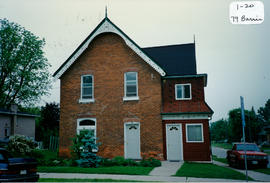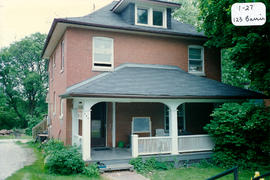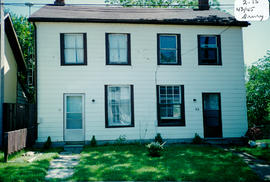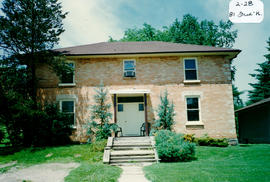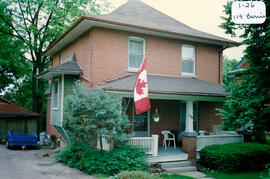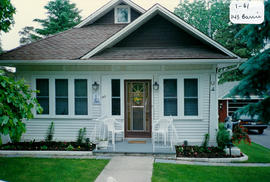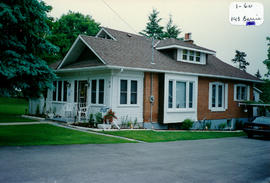- CA BWGPL GJ-HB-2017-03-20-08
- Item
- 1997
Part of George Jackson fonds
The mid-block building once located at 49 Drury St. was built in the neoclassical style around 1880. James Currie (a retired farmer, businessman, carpenter and noted gardener) and his wife lived here many years ago. Gilbert Lukes, his wife, and some of his family also lived here at one time.
The two-storey, rectangular building had a symmetrical façade, a centre hall plan, and a medium-pitched, gable roof. It had large window openings with high floor to ceiling heights. The large, 2/2 double-hung, wood windows had wood lug sills. Aluminum storm windows were modern additions. The house had symmetrically-placed chimneys at both ends of the roof. The metal roof had minimal eaves projection. There were decorative brick dentils at the cornices and stepped brick corbels at the projecting, end gable walls (firewall-type construction). The building had solid, brick construction. At one time the house had a woodshed (with a toilet inside), a chicken run, and a chicken house attached to the barn (with a horse and cow stable), car garage (and loft above) on the laneway. The house was demolished in June, 1997. (1, 2, 3)
George Jackson


